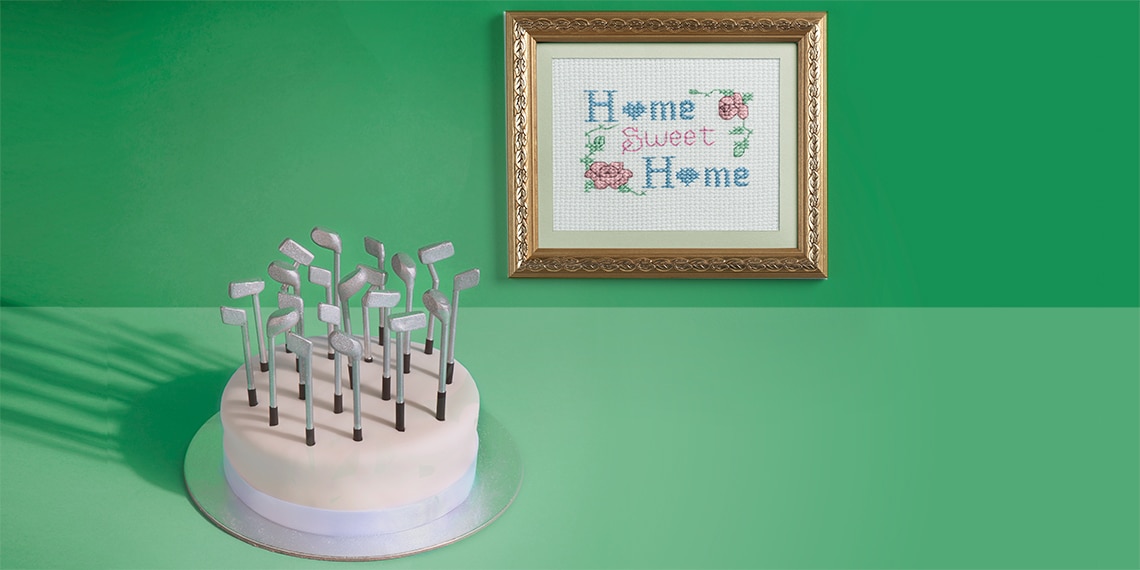
Nearly 80% of Americans age 50 and older say they want to remain in their current home and community for as long as possible, according to a recent AARP study. Of course, staying in your home as you get older—“aging in place” is the term of the moment—can involve some obstacles. You may have to consider renovating your home, for example, in order to improve accessibility if your mobility, or the mobility of a loved one, becomes restricted.
Yet there are compelling reasons to stay put. Many people have an emotional connection to their home; it’s a place where they raised a family or have lived for many years. Aging in place can keep you geographically close to family and friends—and social connections are essential to the well-being of older adults. Or perhaps moving simply isn’t financially viable.
If you’re thinking of aging in place, here are some of the benefits, as well as strategies to help make it work.
Tally the Benefits
❏ Saving money. Even if you factor in the cost of renovations and upkeep for your home, it may be cheaper to stay where you are, according to the U.S. Department of Housing and Urban Development (HUD)—and that’s especially true if you’ve paid off your mortgage. If you’re considering a retirement community or assisted living facility, price a few places out to compare the cost to your daily living expenses now—or your daily living expenses, plus the cost of some in-home help that you may need in the future.
❏ Social connections. Staying in your home helps you maintain relationships in the community that you’ve built up over time, says HUD.
❏ Routine. Moving into a new home means not just adapting to new surroundings, but may also change your schedule.
❏ Freedom. Setting your own schedule helps you feel self-sufficient and independent, which can be important in helping to preserve your mental health. Whereas in group living situations, there may be prescribed times for activities like eating and exercising.
Create Financial Strategies
❏ Build up your funds. At minimum, you will need to have savings for maintenance, taxes and your mortgage payment. Consider putting money away in a high yield savings account.
❏ Consider home financing options. With today’s low interest rates, refinancing your mortgage may help lower your monthly payments, even with the upfront payment required.
❏ Research tax relief. Some states have protections in place for retirees, such as reducing your taxes when you reach a certain age or freezing your home’s value for property tax purposes, protecting you from future increases. And property tax deferrals are available in some places, allowing you to put off paying the taxes on your home for timeframes ranging from one year to as long as you own your home. (Keep in mind that the taxes are deferred, not waived—so you’ll have to pay them back at some point, and with interest.)
❏ Reduce home operating costs. Things like fixing leaks, adding insulation to your attic, cleaning your air conditioning filter and using energy-efficient lighting can lower the cost of utilities, according to the Department of Energy (which offers other suggestions as well). When it comes to upkeep like yard work, if you can’t DIY, consider hiring someone from the neighborhood or through your social network, which can often be cheaper than hiring a professional service.
Consider the Logistics
❏ Find transportation. If you are no longer driving and don’t have access to public transportation, you can maintain your independence by using a ridesharing service. And keep in mind that some errands can come to you; in many urban and suburban areas, practically everything can be delivered, including groceries and medications.
❏ Get in-home help. You may need a medical professional, such as a nurse or physical therapist, for part-time or full-time care in your home. Some types of in-home medical assistance may be covered by Medicare or your insurance provider. And even if you pay out of pocket for some in-home services, it may be cheaper than moving into an assisted living facility.
❏ Be safety conscious. Wearing a medical alert button could be a literal life saver—and well worth the cost involved. Gerontologists still highly recommend this oldie-but-goodie as a tech solution for older adults.
❏ Reduce isolation. When you retire from a routine of working and seeing colleagues, you may become prone to loneliness. Volunteering, taking classes and joining a community center are all ways to stay socially engaged, which could help you live independently for longer. One study found a 70% reduction in cognitive decline for seniors who engaged in frequent social activity versus those who were more isolated.
❏ Be mindful of diet and exercise. Physical activity and proper nutrition are keys to staying healthy, which is essential to remaining in your home. Harvard Medical School offers some tips on walking and other exercises, as well as diet tips, that can help you keep healthy.
But of course, if staying in your own home is no longer working for you or your family, you can explore other options. The key is being prepared and making smart decisions as you continue to age gracefully in retirement.
Rich Beattie is a former executive digital editor of Travel+Leisure, and has written for outlets such as The New York Times, Popular Science, New York Magazine and Ski.
Read next: Renovating for Your Golden Years.

